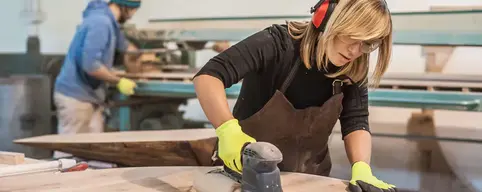

The year 2024 ended for the Polish furniture industry with sold production worth 64 billion zlotys. Despite the impressive sum, it cannot be overlooked that the sector has faced serious challenges that have caused an exodus of the dynamism with which it was associated in the past. The leading problem is the continuation of the downward trend that has dominated the domestic furniture industry in recent years.
In 2024, Poland's furniture sector has seen a further decline in production of about 4% year-on-year, indicating the continued decline of the industry. Furniture manufacturers have faced a number of challenges that affect their business. A key problem is the decline in business profitability. High energy costs are becoming an increasing burden on companies, which in turn translates into higher prices for final products. In addition, the limited availability of wood raw material leads to increased production costs, thereby reducing the competitive advantage of Polish producers.
Undoubtedly, these factors require companies to make significant changes in their operational strategy to meet the growing challenges. High production cost inflation is an almost insurmountable problem for many companies unless properly addressed by structural reforms and new technologies.
Exports are a key element in the strategy of most Polish furniture manufacturers, but in 2024 their value declined by 6%. This decline has taken a toll on the sector's growth rate, which was previously driven by export activity. From this trend, it was impossible not to notice an increase in furniture imports to Poland, which grew by more than 10%. This phenomenon indicates the strong international competition facing Polish manufacturers.
Imported products, often produced in countries with lower business costs, are low-cost alternatives, making it even more difficult for local companies to maintain market share. Competition from Asian and European markets, where many countries support their furniture industries through tax breaks and subsidies, puts the Polish furniture industry in an incomparably more difficult position.
To survive and remain competitive, Polish furniture companies are forced to adapt their strategies to the new market reality. This means, first of all, the need to reduce production costs, which can be achieved by investing in technological innovations. Automation of production processes, the use of modern technologies to manage resources and the search for more efficient production methods are key in this context.
No less important are investments in the development of new products that will meet the growing expectations of consumers in both the domestic and international markets. To remain competitive, companies also need to increase energy efficiency and seek alternative energy sources, which can help contain costs.
Implementing new technologies and logistics solutions can also reduce production time and increase flexibility in delivering products to customers. Collaborating with research entities, as well as the education sector to attract qualified personnel, is an additional element necessary for success in the coming years.



